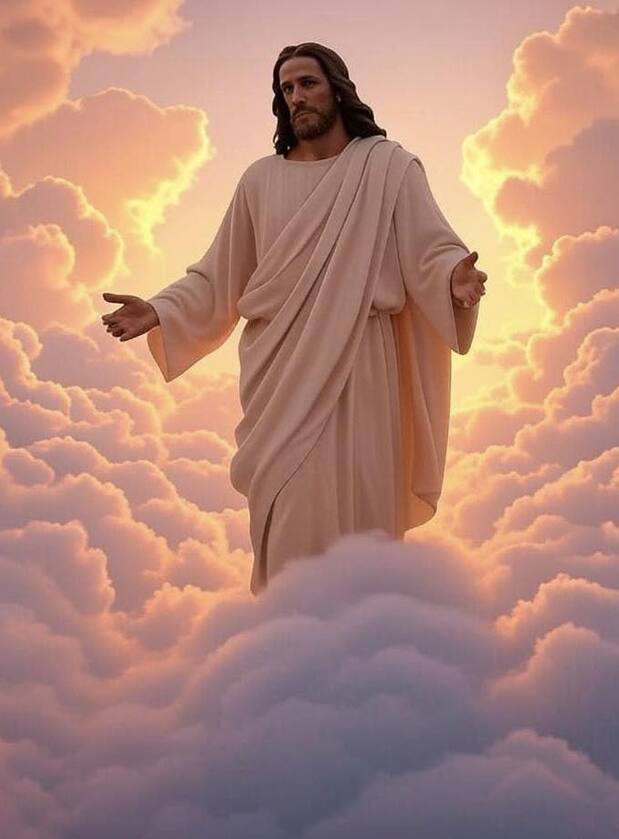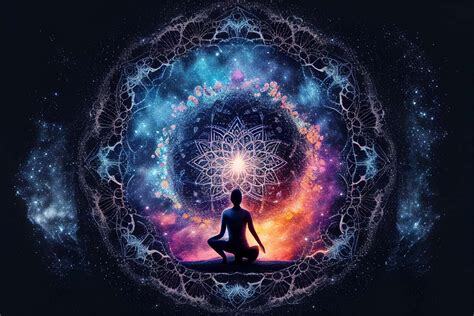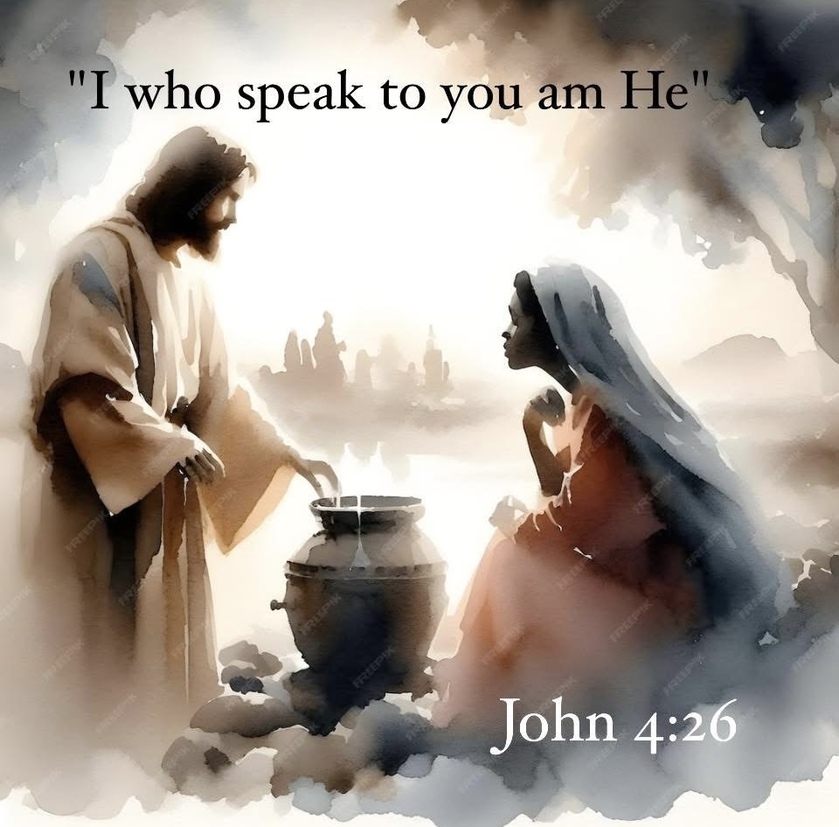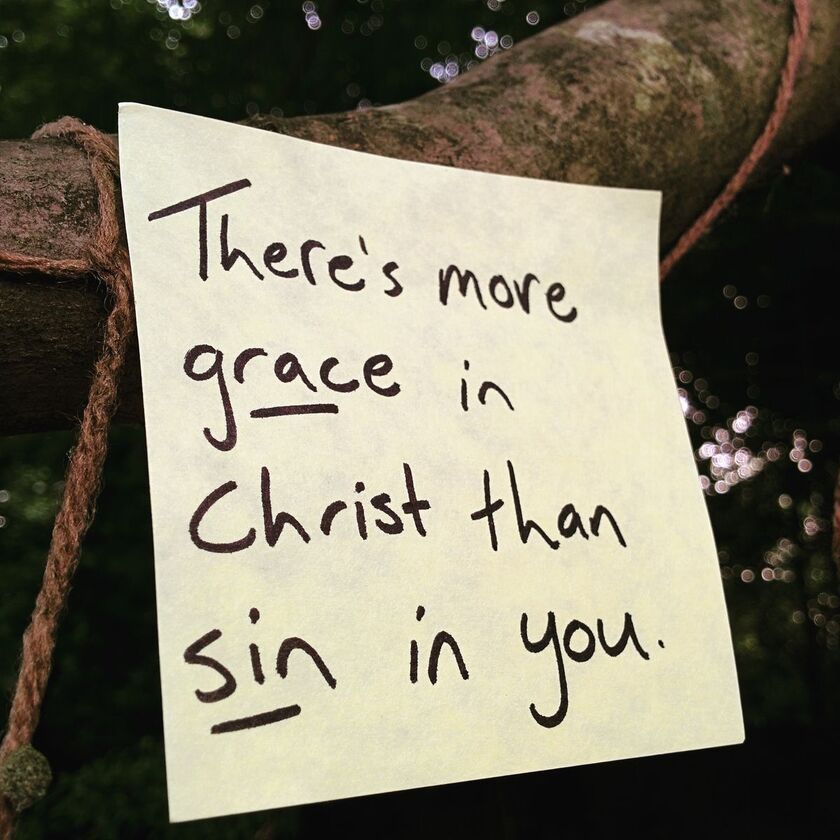Veiled Glory or Pagan Pitfall: The Shekinah Cloud in Acts 1
Acts 1:9-12
And when he had said these things, as they were looking on, he was lifted up, and a cloud took him out of their sight. And while they were gazing into heaven as he went, behold, two men stood by them in white robes, and said, "Men of Galilee, why do you stand looking into heaven? This Jesus, who was taken up from you into heaven, will come in the same way as you saw him go into heaven." Then they returned to Jerusalem from the mount called Olivet, which is near Jerusalem, a Sabbath day's journey away.
In Daniel 7:13, the Son of Man comes "with the clouds of heaven," a vision of divine authority. The cloud that "took [Jesus] out of their sight" signifies His divine nature and His return to the heavenly realm.
What is this cloud?
It is not a natural phenomenon but a theophany, a visible manifestation of God’s presence. In Jewish tradition it represents God’s divine glory, often called the Shekinah. It seems to be a transitional veil between earth and heaven, a liminal space where the divine and human realms intersect. It marks a moment of divine mystery, where human understanding is limited, requiring faith and discernment as many will see something else.
Isaiah 55:9
"For as the heavens are higher than the earth, so are my ways higher than your ways and my thoughts than your thoughts."
It’s a deliberate sign of God’s presence and activity. It invites us to trust God’s presence even when His works are hidden. The concept of Shekinah glory is central to understanding the cloud. Jesus ascends into heaven enveloped by this cloud, this tangible, visible manifestation of God’s presence and glory among His people. And he is enveloped within it. Like in water baptism, he is immersed in the baptism of the Spirit.
This brings to my mind, Romans 6:3-4
"Do you not know that all of us who have been baptized into Christ Jesus were baptized into his death? We were buried therefore with him by baptism into death, in order that, just as Christ was raised from the dead by the glory of the Father, we too might walk in newness of life."
The cloud’s envelopment signifies Jesus’ full immersion into the divine glory of heaven, empowered by the Spirit. This parallels His baptism at the Jordan, where the Spirit descended (Luke 3:22), and foreshadows the Spirit’s outpouring at Pentecost (Acts 2), where the disciples are baptized with the Spirit.
In the Jewish mystical tradition [Kabbalah], the Shekinah is not only the tangible presence of God, but often is personified as the feminine aspect of the divine, embodying God’s immanence, nurturing, and relational qualities. In the Zohar, the central text of Kabbalah, the Shekinah is the "Matronita" (Lady) who mediates divine blessings to humanity. This aspect of God's glory acts as a filter, or curtain, softening God’s infinite light to make it accessible to creation without overwhelming it. The cloud in Acts 1 serves a similar function, hiding Jesus’ ascent to protect the disciples from the full intensity of divine glory. From a Kabbalistic perspective, the Shekinah cloud in Acts 1 emphasizes God’s desire to dwell with humanity, and points to redemption, as the angels promise Jesus’ return "in the same way" (Acts 1:11), evoking Kabbalistic hopes for a cosmic restoration.
According to this thinking Jesus’ ascension in the cloud does not sever this connection but transforms it, as the Spirit (a Christian parallel to the Shekinah’s immanence) will dwell in believers.
1 Corinthians 3:16
"Do you not know that you are God's temple and that God's Spirit dwells in you?"
In Kabbalah, the Shekinah channels divine flow from God's glory to His creation. This mirrors Christian understanding. Jesus’ envelopment in the cloud prefigures the Spirit’s indwelling. The cloud in Acts 1:9-12, as Shekinah glory, envelops Jesus in a transitional veil, marking His ascension with divine mystery and assuring His presence through the Spirit. The Shekinah both conceals and reveals.
As I'm studying these traditions it occurs to me that these things parallel Marian mystics in some Catholic Christian tradition. Both the Shekinah and the Virgin Mary, as understood in mystical traditions, share roles as mediators of divine presence, embodiments of nurturing and immanence, and symbols of divine-human connection. In Kabbalah, the Shekinah is depicted as a mother, bride, or queen, nurturing creation. She channels divine blessings, sustaining the world with love and mercy. Marian mystics portray Mary as the tender Mother of God, who intercedes for humanity and nurtures believers with maternal care, the "Star of the Sea," guiding souls to God.
The more I read about these mystics and their thoughts on the Shekinah and Mary, I'm convinced that they are merely attempting to humanize the divine power of God. To give it human form and tie it to a human figure. In our understanding of pagan mythology this would mean these things are idols. Both are feminine symbols of God’s immanence, nurturing creation with love and mercy. Both mediate divine presences, acting as conduits between God and humanity. Both are associated with divine mystery, inviting faith in God’s hidden higher ways. Both Kabbalistic and Marian mystical traditions aim to express the immanence of God in anthropomorphic form.
So, this begs the question, is the Shekinah a separate deity or another aspect of God’s unified essence? Both Kabbalists and Marians use anthropomorphic language to convey God’s relational nature in the Shekinah, but is it literal or figurative? Both traditions would be careful to avoid idolatrous understanding of these figures. Marian mystics claim to venerate Mary as a human, not divine, figure who participates uniquely in God’s plan. However, if you were to simply observe their practices, you'd quickly conclude that veneration to be worship of the divine. They attempt to avoid this by compartmentalization of worship theology distinguishing latria (worship due to God alone) from dulia (veneration of saints) and hyperdulia (special honor for Mary). In Kabbalah they claim to adhere to strict monotheistic practices, rejecting physical idols. For them the Shekinah is a symbolic expression of God’s immanence, not a literal figure, so they say.
So, it becomes clear that the mystics struggled with the latent pagan idolization of their faith traditions. They knew they were brushing up against idolatry in their practices. And so, they were forced to redraw the boundaries of worship and veneration. This is the ultimate reality of every introduction of pagan religion into our faith practices. It is inevitable that our religion will end up bumping up against this truth and be forced to compromise something. When we strive to make our inadequate understanding clearer and more personal, we always end up making idols. This perception arises when hyperdulia’s intensity overshadows its theological limits, blurring the distinctions in our practices.
So, that's what all of this comes down to, what each person is doing in their practices and what each person is believing in their hearts. Misguided practices (e.g., treating statues as divine) are deviations, not the intended theology. Kabbalah was developed in a context surrounded by Christian and Islamic mysticism, as well as lingering pagan influences. The Shekinah’s feminine imagery echoes ancient Near Eastern goddess motifs (e.g., Asherah). And so, again it comes down to whether the adherents are truly steering clear of that pagan tradition, or not. They can choose to hold firm in monotheistic faith but still easily slip into veneration of the feminine aspects of The Spirit. It's often blurry, which is ironic since the Shekinah blurs the heavenly realms.
Conclusion:
Avoid the paganism that inevitably results in accidentally worshipping Asherah, Artemis, Isis, The Queen of Heaven (by default), by veering away from ALL these "forms" of religion that focus on the feminine aspects of the Spiritual Realm. They are deceptive practices that call people into worshipping the divine feminine aspects of the Spirit, and they are by design meant to do exactly that, (by The Devil).
I know it sounds crazy when you start saying things like, "by The Devil", but keep in mind, we're talking about practices that focus on idols and anthropomorphic beings. Which is crazier, believing a statue is sacred, and the power of God's presence is symbolic, or that the Devil is trying to confuse people into worship that takes the place of the Holy Spirit?
Food for thought.
Prayer:
Heavenly Father,
We come before You in awe of Your glory, revealed in the cloud that enveloped Jesus in Acts 1:9-12, a sign of Your Shekinah presence, both mysterious and near. Thank You for Your immanence, dwelling with us through Your Spirit, and for Your transcendence, higher than our ways (Isaiah 55:9). Guard our hearts from idolatry, keeping our worship pure and centered on You alone. Help us discern deceptive practices that humanize Your divine essence, leading us astray. Fill us with Your Holy Spirit, that we may live empowered by Your truth, trusting Your unseen plan and hoping in Christ’s return.
Through Jesus, our Savior, we pray.
Amen.




















